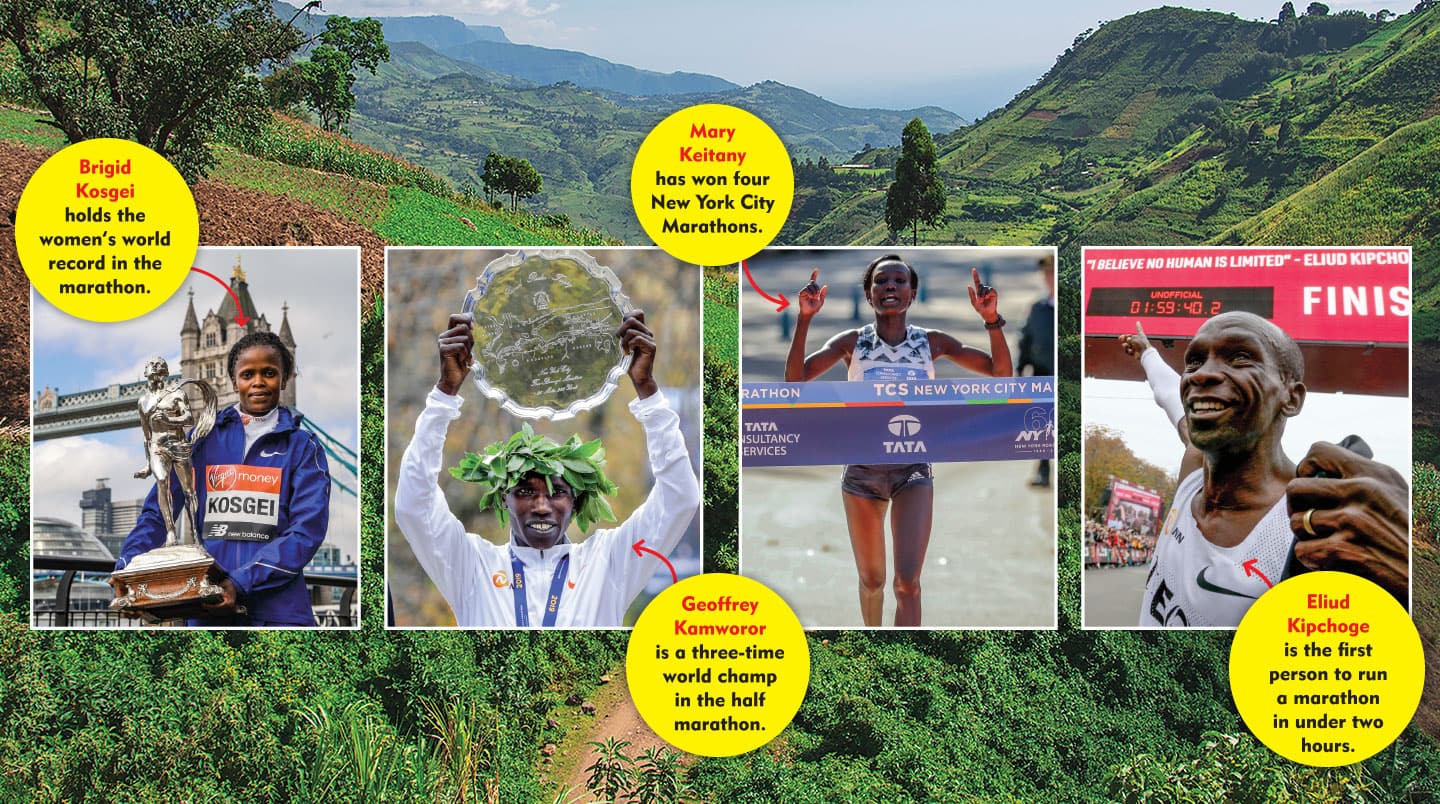Jim McMahon/Mapman ®
Nearly half of the world’s best distance runners come from the Rift Valley region in Kenya.
Last November, about 54,000 runners gathered for the New York City Marathon. Less than two-and-a-half hours later, the winners raced across the finish line in Central Park.
These athletes showed incredible endurance. They ran 26.2 miles. They suffered intense pain without giving up. But they also had something else in common. The top men and women all came from two countries in East Africa: Kenya and Ethiopia.
No one was surprised by this. Runners from a small corner of Africa have been winning long-distance races for years. Most of those runners have been Kenyan. And they tend to come from one region called the Rift Valley.
Last November, about 54,000 runners gathered for the New York City Marathon. Less than two-and-a-half hours later, the winners crossed the finish line in Central Park.
These athletes had great energy. They ran 26.2 miles. They were in pain, but they did not give up. They had something else in common too. The top runners all came from two countries in East Africa: Kenya and Ethiopia.
This came as no surprise. Runners from a small corner of Africa have been winning long-distance races for years. Most of them have been Kenyan. And they tend to come from one area called the Rift Valley.
Last November, about 54,000 runners gathered for the New York City Marathon. Less than two-and-a-half hours later, the winners raced across the finish line in Central Park.
These athletes showed phenomenal endurance. They ran 26.2 miles and suffered intense pain without giving up. They also had something else in common: The top men and women all came from Kenya and Ethiopia, two countries in East Africa.
This wasn’t surprising. Runners from a small corner of Africa have been winning long-distance races for years. Most of those runners have been Kenyan, and they tend to come from one region called the Rift Valley.

